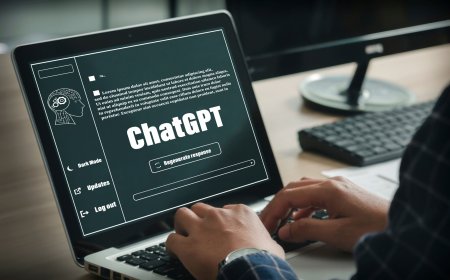Partial-Onset Seizures: Types, Triggers & How to Manage Them
Discover the causes and types of partial-onset seizures and how Pregabalin 300mg helps manage them. Learn key triggers, treatment tips, and real-life strategies for living seizure-free.
Living with partial-onset seizures,orfocal seizures,can feel likewalkingthrougha mazeandturningwhereyoudon'texpect to.You'recompletelyalertone second, and the nextyour sensescandistort or your bodymove withoutyour say. Thesetypes ofseizures don'timpactthe entire brain butbegininanareaof the brain, and for millionsworldwide, they confuse, fear, and disruption to dailyroutine. The good news?Andwith thepropermedication,suchasPregabalin 300mg,controllingtheseattacksbecomes amatterof realityandpossibility.
This blog willguideyouthrough:
-
What partial-onset seizures?
-
Thevarioustypes
-
Whatcausesthem
-
How Pregabalin, thegenericnameofPregabalin 300mg,assists
-
And how to live a better life while managing this condition
What Are Partial-Onset (Focal) Seizures?
Unlikemostseizures thattakehold ofboth sides of the brain, partial-onset seizuresstartinonelocation.Eventhat smallareacan stillaffectthewayyou move, feel, oract.Theseizurescanoccurwhilesomeindividualsare still conscious, while othersloseawarenessof theirenvironment.
Physiciansnowclassifypartial seizures into twobroadcategories:
-
Focal Aware Seizures (previouslyreferredto assimple partial seizures): Youareawake andconscious. Youmightfeeltwitching,unusualsensations, or emotionalshifts.
-
Focal Impaired Awareness Seizures (previously complex partial seizures): Youbecometemporarilyunaware,stare blankly, orrepeatactionssuchaslip-smacking orrubbinghands together.
Theycan lastanywherefrom a few seconds to afewminutes, but they caninterferewithwork, driving, relationships, andmany other things.
Common Triggers Behind Partial-Onset Seizures
Thoughepilepsy and brain conditions arecomplicated,mostindividualsfind thatthere arepatternstotheir seizures.Lookoutforthesecommon triggers:
-
Lack of Sleep Brainfatigueputspressure onthe brain,makingitmorelikelyto triggera seizure.
-
Stress or Anxiety Emotionaldistressmay notitselftriggera seizure, but it canreduceyour threshold.
-
Flashing Lights Especially in people with photosensitive epilepsy.
-
Alcohol Withdrawal One isarecognizedseizuretrigger,particularlyfollowingbingeconsumption.
-
MissingMedications Failingto takeyourprescribeddose of Pregabalin 300mg or any other anti-epilepticdrugcancauseseizureactivitytorise.
-
Hormonal Changes Certainfemalesnoticeanincrease inseizuresnearmenstruation.
-
Illness or Fever Body-wideinfections orextremebodyheatcanexacerbateseizure tendencies.
Learningyourseizuretriggerswitha seizure diary canassistyou and yourphysicianinmoreindividually designingyour treatmentregimen.
How Pregabalin 300mg Supports Seizure Control
Forpartial-onset seizures, Pregabalin isamongthe mostsuccessfuldrugsprescribed as anadjunctivetherapy.Breakitdown:
-
Pregabalin,which is the activecomponentin Pregabalin 300mg, is notanordinarypainkilleror anti-inflammatorymedication.
-
Instead, itsedatesoveractivenervoustissueinyourbrain and spinal cord bymanagingcalcium channels. This stabilizes the electrical activity in your brain, thecause of seizures.
-
It'sveryhelpfulfor focal seizures whencombinedwith other seizure-managementmedications.
Whatisparticularly attractive aboutPregabalin 300mgis that it not onlydecreasesthe number and severity,butitalsoalleviatesaccompanyingnerve pain and anxiety, whichfrequentlyaccompanyepilepsy.
Why Pregabalin 300mg Works So Well:
-
Rapidabsorption:Hitspeak levelsfast,stabilizingsymptoms faster.
-
Fewerdruginteractions:Asitdoesnotsignificantlyinteract with liver enzymes, itissafer totakeincombination withother medications.
-
Improves sleep and anxiety: Both are common challenges in epilepsy management.
Its prescribed in various dosages, but Pregabalin 300mg is often recommended for those who need a consistent and stable effect.
Managing Life with Partial-Onset Seizures
A proper medication plan is essential, but managing seizures is about more than just taking a pill. Heres a human-focused guide to living well with partial-onset seizures:
1. Stick to Your Routine
Take Pregabalin 300mgevery dayat the same time.Skippingdoseseven oncecanreverseweeks of stability.
2. Track Your Seizures
Keepan app or journalofwhat you were doingleadingup toeach episode. This canuncoversecrettriggerssuchascaffeine,notdrinkingenough water, or stress.
3. SleepWell
Makesureyougetat least 7-8 hoursofsleep eachnight.Lackofsleepwillincreasethelikelihoodof breakthrough seizures.
4. Manage Your Stress
Mindfulness, yoga, or therapy sessions can help lower stress levels and reduce seizure frequency.
5. Have a Seizure Response Plan
Inform family, friends, and coworkers on what to do if you have a seizure. Keep an emergency contact on your phones lock screen.
6. Avoid Alcohol and Recreational Drugs
These substances not only interfere with Pregabalin 300mg but also heighten seizure risk.
7. Diet & Hydration
Bewell-hydrated andhavea balanced dietwithlotsofmagnesium and omega-3s, both of which areknown tohelpwithnerve function.
When to Talk to Your Doctor
If you'retakingPregabalin 300mg andexperiencingbreakthrough seizures, don't wait. Youmayrequireadosageadjustment,combination therapy, oradditionaltestingsuchasan EEG or MRI.
Also, if younoticeunusual side effectssuchasswelling in yourarms or legs,blurredvision, or mood changestellyourdoctor right away. Pregabalin isusuallywelltolerated, buteachindividualrespondsdifferently.
Final Words
Partial-onset seizures can bescaryanduncontrollablebut they'renotinvincible. With asystematicplan, self-awareness, andeffectivemedicationlike Pregabalin 300mg, you canregaincontrolofyour life.Keep in mind: You are not yourillness. With thepropertools, thepropersupport, and thepropermedication, you cansucceed.
FAQs One-Liner Answers
Q: What is the active ingredient in Pregabalin 300mg?
A: Pregabalin.
Q: Can Pregabalin 300mg help control partial-onset seizures?
A: Yes, it helps stabilize brain signals in focal seizures.
Q: Should I stop taking Pregabalin 300mg suddenly?
A: No, sudden withdrawal can trigger seizurestaper only under doctor guidance.
Q: Can Pregabalin 300mg treat nerve pain too?
A: Yes, it's effective for nerve pain and anxiety alongside seizures.
Q: Is Pregabalin 300mg habit-forming?
A: It has some potential for dependence, so follow your doctors prescription carefully.






































